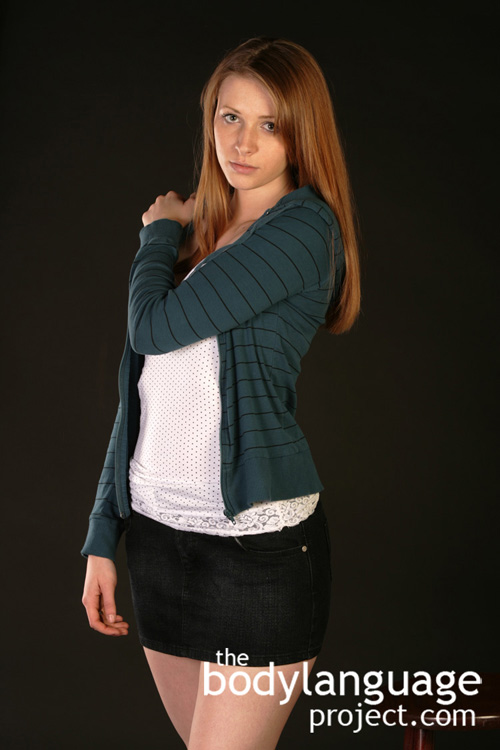This is a typically female posture and happens by holding reaching across the body to grab the opposite elbow in the hand while that arm is left vertically dangling to the side.
A variation of the posture happens by reaching across the body and grab the opposite shoulder rather than the opposite arm. While the double arm huge is a defensive postures, the partial arm cross is a subtle posture that indicates fear, timidity, shyness and lack of self confidence. Both are barrier type postures which protect the core of the body like a shield to signals to others that we don’t wish for them to come close. The origins of the partial arm cross likely stems from the comfort felt by a child who’s hand was held or who’s shoulder was grasped by a parent, when in novel situations.
The posture feels natural and comfortable when in fearful situations because it provides the sensation of being hugged and protected, like having our hand held. It might have a childhood throwback when our parents scooped us up when visiting unfamiliar houses, distant relatives to help sooth us over our fears. While men can be seen to perform this posture, it is much more rare, likely due to their broader shoulders. Men will instead take up the fig leaf position by holding their hand-in-hand to cover their most coveted assets, their genitals.
We see the posture when people meet for the first time, when being singled out of a crowd or any other stressful situation that causes fear. Sometimes this posture is by default as it is with particularly shy individuals who take some time to warm up to other people. To reduce this posture in others and help them ease up, use more submissive body language and tone down dominant language. You might also experiment with acting timid yourself which will help quickly build rapport. It is nearly universal that people feel most confident surrounded by people who similarly match our own self-esteem and ideologies.

